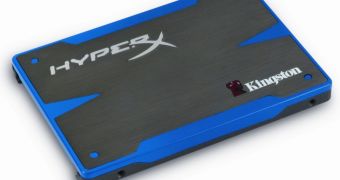It appears that the solid state drive market might just prove to be a lucrative venture for a certain maker of storage and memory devices, especially if NAND Flash memory chips get cheaper.
The market of solid state drives has been on a steady rise ever since the first such storage units got released.
Then, when the TRIM command was created, allowing for deleted data to be properly erased, freeing write cycles, performance degradation was no longer an issue either.
That was when capacity and pricing became the main defining factors of success in the struggle against the hard disk drive.
Right now, HDDs are still prominent, especially after reaching 4 TB of capacity, but SSDs haven't been slacking off either.
In fact, Kingston, at least, believes that the ongoing year (2011), will bring about a rise in sales of such products.
Currently, the company ships about 70,000 drives a month, a number that could grow to over 100,000 by the fourth quarter (October).
Enterprise-aimed models will be the main driving force, accounting for 70% of the total, at least for now, and featuring capacities of 96 to 256 GB. All in all, by the end of 2011, Kingston hopes to sell at least one million SSDs.
Meanwhile, the outfit has finally delivered its first SandForce-based product, part of the HyperX line, at this year's ongoing edition of the Computex trade show.
One factor that could help a positive evolution is the price decrease of 1 GB NAND to under $1, although this may only happen next year.
On the flip side, analysts still worry that the Japan disaster of March 11 will make its effects felt as component shortages sooner or later, so Kingston's ultimate marketing performance might depend more on its ability to supply vendors with products than customer willingness to buy them.

 14 DAY TRIAL //
14 DAY TRIAL //